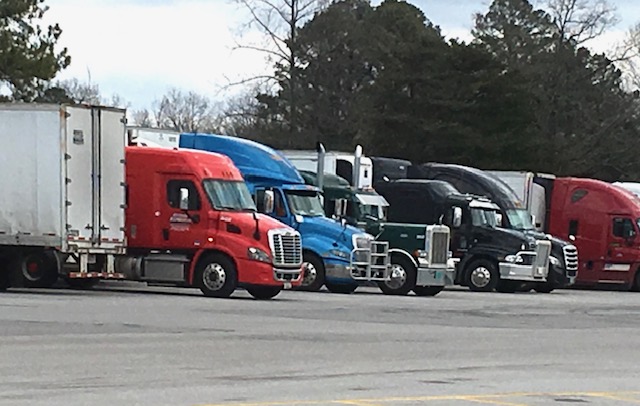By Al Muskewitz
The cost of everything seems to be going up these days and the American trucking industry that brings almost all of it to the consumer is not immune to the trend.
It cost 7.7 percent more to operate a truck on the American roadways in 2018 than it did the year before, an annual analysis of operational costs by the American Transportation Research Institute revealed upon its release Monday.
The calculation marks the single highest one-year increase since 2010 and 2011 as the average overall cost to operate a truck jumped 16 cents per mile to $1.82 or more than $6.25 an hour. The overall operational cost per hour was nearly $72, the highest in the history of the survey.
“The robust economy, a long-standing labor shortage, increasing diesel fuel and insurance prices all contributed” to the increasing cost, ATRI said in its report.
“If the driver shortage continues, wages are expected to increase, exacerbating the already large cost of employee compensation,” the report said. “In addition, if the geopolitical, trade and legislative environments favorably resolve their issues, 2019 data will likely reflect a solid growth in both trucking services and related costs.”
The survey accounted for fuel costs, lease and purchase payments, maintanence costs, insurance, permits and licenses, tires, tolls and driver wages and benefits.
To no surprise, fuel and driver compensation continue to be the top line-item expenses, representing 67 percentage of a truck’s cost per mile, although fuel and insurance costs saw the fastest year-over-year increase.
Fuel costs rose 17.7 percent over the previous survey and insurance costs grew 12 percent; tort reform is one of this year’s top 10 critical issues facing the trucking industry. Driver wages and benefits increased 7.0 and 4.7 percent, respectively. Tolls jumped 11.1 percent over the previous year.
“While costs continue to rise for our members, Alabama truckers still move our economy forward,” Alabama Trucking Association president and CEO Mark Colson told Wright Media. “It is important for the public to be aware of these increasing costs and what is driving them, such as plaintiff trial attorneys targeting the people who work in trucking. At the end of the day, these costs trickle down and impact everyone’s pocketbooks.
“Fleet owners are combating rising costs by investing in technology, training for employees and operating more efficiently. Yet increasing costs take a toll on our industry and its ability to continue providing good-paying jobs. Regardless, trucking jobs – be it drivers, diesel techs, fleet managers, dispatchers – will continue to be high demand and we welcome hard-working talented folks into trucking.”
Since 2012, overall motor carrier operational costs have increased more than 11.6 percent – exceeding the 10.8 percent inflation rate for that same time period, ATRI said.
With the exception of tires, all line item costs measured in the report experienced increases from 2017 and 2018. The tire line remained the same, partly due, the report said, to a surplus in synthetic rubber used to replace natural rubber in tires.
And while those overall costs have risen steadily over the last four years, the 7.7 percent jump is only three years removed from the largest year-to-year decrease in the last nine years, when it dropped 13 cents per mile or an average of $1.575 per mile (just under $63 per hour).
When compared to specialized sectors of the industry (tankers, flatbeds, etc.), truckload carriers have the lowest operating cost ($1.71 CPM) despite a 14.8 percent increase from the previous year.
The ATRI report focused exclusively on the for-hire sector of the industry, but it cited the National Private Truck Council’s annual private fleet report to make what it called some “interesting comparisons.”
The NPTC report showed the average operating cost for private fleets ranged between $2.69 and $3.14 depending on mileage, equating to a 48-72 percent premium over the for-hire findings. It said the difference derived from higher administrative costs with managing trucks within a larger enterprise.
Based on the $3.14 benchmark, private fleet costs rose 7.9 percent over the previous year, indicating an “extremely similar landscape for line-item cost pressures.”
A copy of the complete report is available from ATRI at www.TruckingResearch.org
Al Muskewitz is Editor-in-Chief of Wright Media Corp.
Report: Operational Costs Rise 7.7 Percent in 2018


Be the first to comment on "Report: Operational Costs Rise 7.7 Percent in 2018"